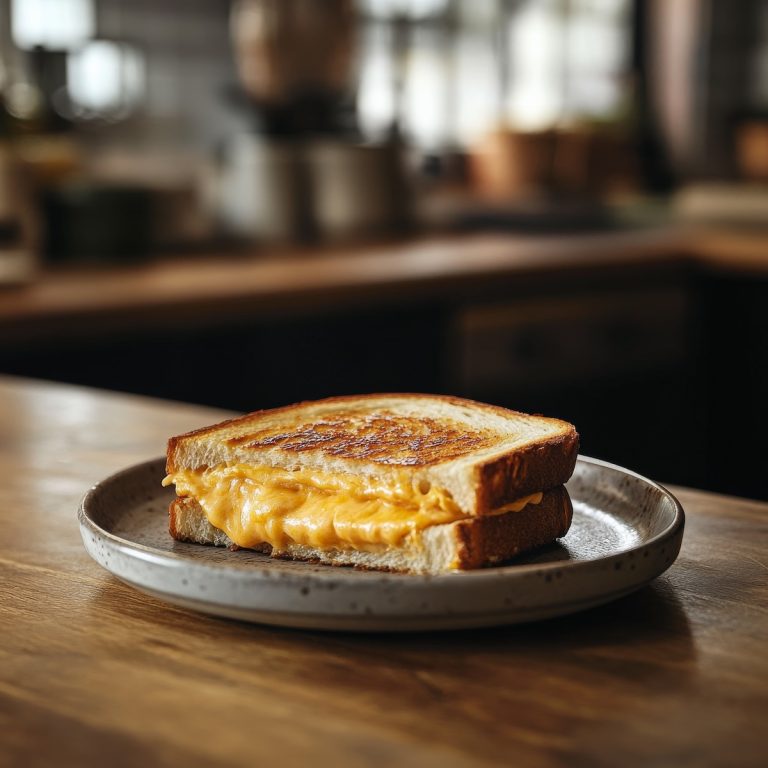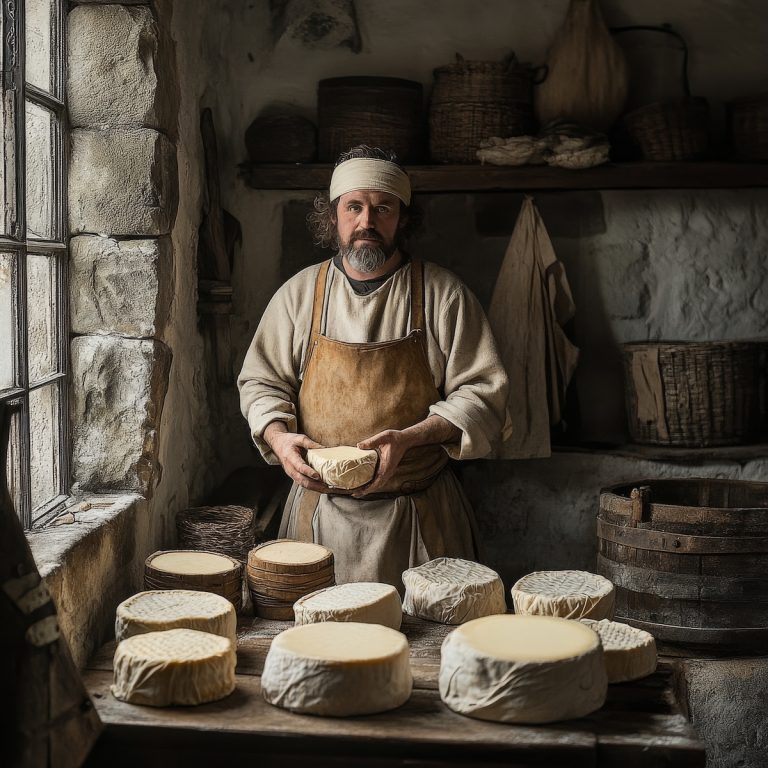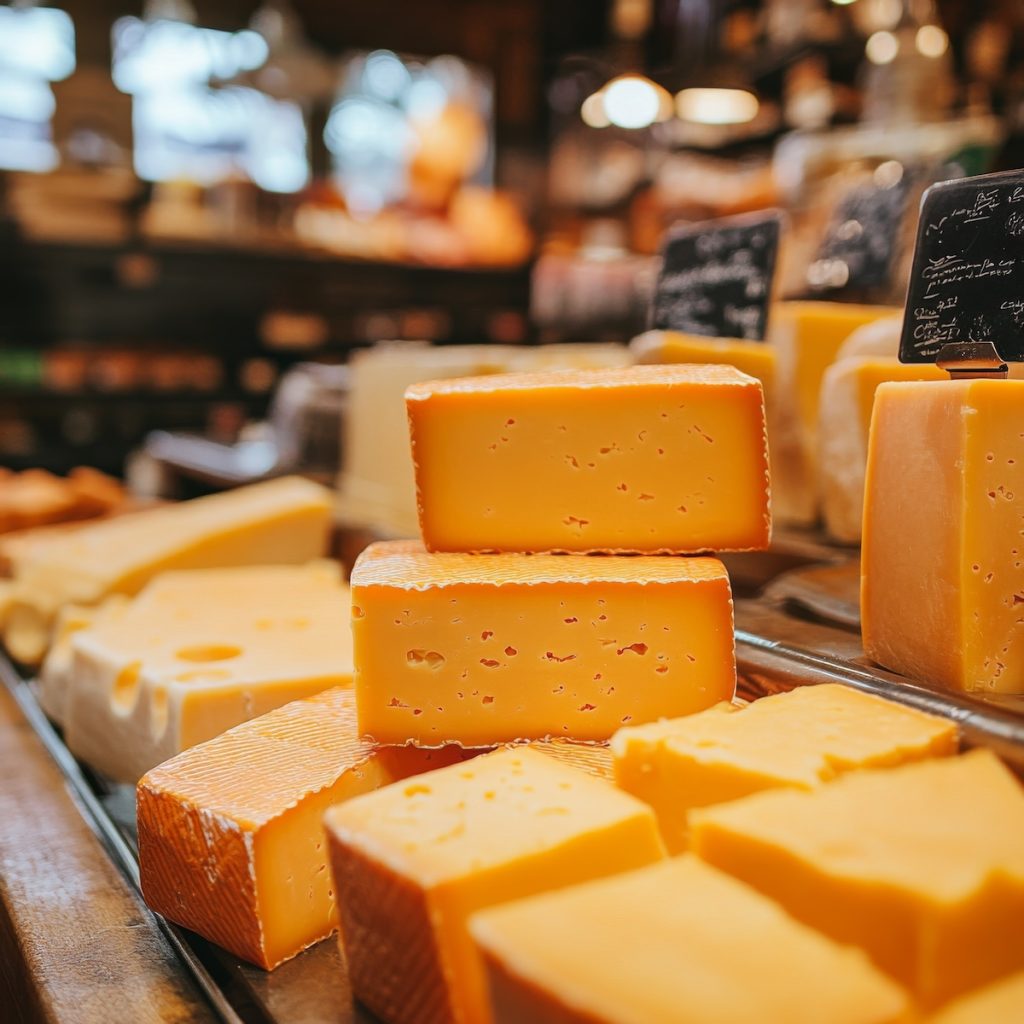Sharp, Creamy, Bold: Everything You Need to Know About Cheddar Cheese
Cheddar cheese has a way of making just about everything better. Cheddar always brings that perfect mix of flavor and comfort, whether it’s melting over a burger, stacked in a sandwich, or sliced for snacking.
In this post, I’m taking a closer look at what makes cheddar so special. I’ll dive into where it comes from, how it’s made, and why no two cheddars taste exactly the same. From smooth and mild to sharp and crumbly, there’s a cheddar out there for every mood and every meal.
I’ll also share a few tips on picking the right kind depending on what you’re cooking (or just eating straight from the fridge — no judgment). Along the way, you’ll find some fun facts, a few surprises about cheddar’s history, and ideas for pairing it with everything from wine to apples.
Whether you’re a lifelong cheddar fan or just starting to realize how awesome it is, there’s something here for you. So grab your favorite cheese knife — or just a napkin — and let’s dig into the delicious world of cheddar cheese.
How Cheddar Can Be Used in Cooking
| Category | Dish | Description |
|---|---|---|
| Savory Dishes | Grilled Cheese Sandwiches | Melts perfectly for a rich, gooey center. |
| Mac and Cheese | The classic sharp cheddar base adds depth and tang. | |
| Cheddar Biscuits or Scones | Adds savory richness and golden, cheesy tops. | |
| Quesadillas or Tacos | Melts well and adds punch to Mexican-style dishes. | |
| Soups | Especially in broccoli cheddar or potato cheddar soup. | |
| Cheese Sauce | Great for nachos, pasta, or a drizzle on roasted veggies. | |
| Stuffed Baked Potatoes | Stir into the filling or melt over the top. | |
| Scrambled Eggs or Omelets | Adds body and flavor, especially sharp cheddar. | |
| Casseroles | Melts beautifully into dishes like shepherd’s pie or hash brown bake. | |
| Savory Pies or Quiches | Mixed into filling or sprinkled on top. | |
| Toppings & Snacks | Cheeseburgers | Melts into a perfect savory layer. |
| Charcuterie Boards | Pairs well with apples, chutney, nuts, and crackers. | |
| Savory Muffins or Cornbread | A mix-in that adds richness and surprise. | |
| Loaded Fries or Nachos | Sharp cheddar is bold enough to cut through the fat. | |
| Cheese Crackers | Use in dough for a bold, salty snack. |
5 Interesting Facts
1. Cheddar Doesn’t Naturally Come Orange
Cheddar is naturally pale or off-white. The iconic orange color comes from annatto, a natural dye from the seeds of the achiote tree. It was initially added to mimic the rich yellow hue of milk from grass-fed cows.
2. It’s Named After a Real Village
Cheddar cheese is named after the village of Cheddar in Somerset, England, where it was first made over 800 years ago. There are even caves nearby — Cheddar Gorge — where the cheese was traditionally aged due to the cool, stable climate.
3. It Can Be Aged for Over a Decade
Some specialty cheddar cheeses are aged up to 10 years or more, developing super sharp, nutty, crystalline textures. Aged cheddar often has those crunchy white bits — tyrosine crystals, amino acid formations, and signs of long aging.
4. Only Some Cheddars Are Protected
West Country Farmhouse Cheddar in the UK has PDO (Protected Designation of Origin) status. That means it must be made in specific counties (like Somerset and Devon) using traditional methods, like cloth binding and aging in natural conditions.
5. It Changes Flavor as It Ages
Young cheddar is mild and creamy, but it becomes sharper, saltier, and more crumbly as it ages. The transformation comes from natural enzymes and bacteria breaking down fats and proteins — a delicious form of cheese science!
Types of Cheddar Cheese
Not all cheddar is the same, and that’s part of what makes it so much fun to eat. Depending on how long it ages (and sometimes where it’s made), cheddar can have different flavors and textures.
Mild cheddar only ages for about 2–3 months. It’s smooth, creamy, and melts like a dream. It’s the cheese you want in your grilled cheese sandwich or on a cheeseburger when you want that ooey-gooey pull.
Medium cheddar gets a little more time — around 4–6 months. It’s still lovely and melty, but starts to bring a bit more flavor. You’ll notice a slightly sharper, tangier kick compared to mild.
Sharp cheddar usually ages between 9 months to a year. Now the cheese starts to show off. It’s bolder, crumblier, and has that tangy punch that cheddar fans crave.
Extra sharp cheddar goes all-in. It can age for 18 months, two years, or even longer. It’s crumbly, salty, and super rich. You probably won’t melt this one on a burger — you’ll want to savor it or pair it with apples, nuts, and a good beer.
Here’s a quick cheat sheet:
| Type | Aging Time | Flavor Profile |
|---|---|---|
| Mild Cheddar | 2–3 months | Smooth, creamy, mild |
| Medium Cheddar | 4–6 months | Creamy, slightly tangy |
| Sharp Cheddar | 9–12 months | Tangy, crumbly, bold |
| Extra Sharp Cheddar | 18+ months | Strong, crumbly, salty |
How Cheddar Cheese Is Made
So how exactly do you make cheddar cheese? It’s actually a pretty cool process, and it hasn’t changed much since those early days in England.
First, cheesemakers start by warming up fresh milk and adding a special enzyme called rennet. This helps the milk thicken up and separate into curds (the solids) and whey (the liquid).
Once the curds form, they cut them into small pieces to release even more whey. Then they heat everything a bit more and stir it around until the curds firm up.
Now comes the part that gives cheddar its name — cheddaring. The curds get piled up, flipped, and stacked over and over again.
This process squeezes out more whey and helps build that dense, crumbly texture we all love. Once the curds are ready, they chop them up, salt them, and press them into big blocks.
After that, it’s time to let patience do its thing. Cheddar can age anywhere from a few months to several years. Younger cheddars stay smooth and mild, while older ones turn sharp, crumbly, and packed with rich, nutty flavor.
Some cheesemakers like to keep it natural; others add annatto to give it that famous orange color. Either way, it’s still pure cheddar magic.
Types of Milk
Cheddar cheese is traditionally made with cow’s milk, and that’s still the most common type used around the world today. Depending on the producer and regional regulations, it can be made from either raw (unpasteurized) or pasteurized milk.
Some artisan producers even use raw cow’s milk to create deeper, more complex flavors (like Montgomery’s Cheddar in England). In contrast, big commercial brands often use pasteurized milk for consistency and food safety.
1. Cow’s Milk: The Standard
All traditional cheddar is made from cow’s milk. It has the right balance of fat and protein to produce a firm, sliceable cheese that can be aged beautifully.
Flavor: Creamy, grassy, sometimes nutty, depending on what the cows eat.
Texture: Firm and dense, but can vary from smooth to crumbly depending on age.
2. Pasteurized vs. Raw Milk
Pasteurized Milk:
Most supermarket cheddar is made with pasteurized milk. It’s consistent, safe, and easier to regulate — but some say it can slightly mute the depth of flavor.
Raw Milk:
Used in traditional or farmhouse cheddar (like Montgomery’s or Keen’s). The natural bacteria in raw milk add complexity and depth during aging. These cheeses often taste sharper, more savory, or even a bit grassy.

Famous Cheddars From Around the World
| Cheddar Name | Country/Region | What Makes It Special |
|---|---|---|
| West Country Farmhouse Cheddar | England (Somerset, Devon, Dorset) | Traditional, protected by law (PDO), rich and earthy flavor. |
| Keens Cheddar | England (Somerset) | Handmade, clothbound, sharp and nutty. |
| Montgomery’s Cheddar | England (Somerset) | Raw milk cheddar, aged long, strong, deep flavor. |
| Cabot Clothbound Cheddar | United States (Vermont) | Aged in caves, grassy and complex flavors. |
| Tillamook Cheddar | United States (Oregon) | Smooth, creamy, widely loved in the U.S. |
| Quicke’s Cheddar | England (Devon) | Farmhouse-made, matured slowly, buttery and savory. |
| Mature Irish Cheddar | Ireland | Rich, sharp, sometimes slightly sweet. |
| Mainland Vintage Cheddar | New Zealand | Extra-aged, bold and crumbly. |
| King Island Cheddar | Australia (Tasmania) | Creamy, aged in a maritime climate for a unique finish. |
History
Cheddar cheese has been around for a long time — like, really long. It all started way back in the 12th century in the village of Cheddar, in Somerset, England.
Farmers there needed a way to preserve extra milk before it spoiled, so they got creative. They figured out that by heating the milk, adding rennet, and pressing the curds, they could make a dense, flavorful cheese that lasted way longer than fresh dairy.
As word spread, cheddar cheese started popping up all over England. It wasn’t just a local thing anymore — people loved it. By the 17th and 18th centuries, cheddar had become such a big deal that even Queen Victoria got a giant wheel of it as a wedding gift (seriously, it weighed over 1,000 pounds).
When English settlers moved to places like North America, they brought their cheesemaking skills with them. Over time, different regions put their spin on cheddar. Some made it sharper, some made it milder, and some even started dyeing it that signature orange color with annatto.
Today, you can find cheddar everywhere, from small farm shops to giant grocery stores. It’s come a long way from a little village in England — and honestly, we’re all better off for it.





